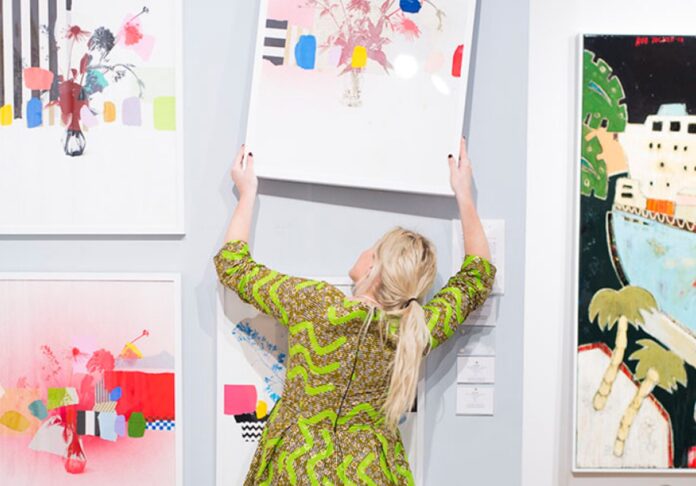Introduction
Australia is home to a vibrant and diverse artistic heritage that is unique in the world. This heritage has been shaped by the country’s natural environment, its Indigenous culture, and its relationship with the British Empire. From traditional Aboriginal art to contemporary painting and sculpture, Australia has a rich history of producing great works of art.
Aboriginal Art
The oldest form of art in Australia is Aboriginal art which dates back thousands of years. It was developed as an expression of social and spiritual beliefs, as well as being used for storytelling purposes. This type of original artwork in Melbourne often consists of dot paintings on bark or canvas, rock engravings, sculptures made from wood or stone, and carvings from shells or bones. Many pieces feature intricate designs which represent important elements from Indigenous mythology such as animals and plants found in their native environment.
European Influences on Australian Art
When the British settled in Australia during the 18th century they brought with them their own style of art which had a great influence on Australian painters and sculptors during this time period. The most famous example is Arthur Streeton’s iconic landscape paintings that captured the beauty of Australian landscapes such as Sydney Harbour Bridge at sunset or Palm Trees at Coogee Beach. Other notable artists
Traditional Art Forms in Australia:
Australia is a country with a rich and vibrant cultural heritage. From traditional art forms such as Aboriginal rock paintings and cave drawings to more modern creations like boomerang and didgeridoo carvings, Australia has a wealth of unique art that speaks to its past, present and future. In this article, we will explore two of Australia’s most iconic traditional art forms – aboriginal rock paintings and cave drawings, as well as boomerang and didgeridoo carvings.
Aboriginal Rock Paintings and Cave Drawings
Aboriginal rock paintings are one of the oldest surviving artistic traditions in the world. They are estimated to be up to 40,000 years old, making them some of the oldest human-made works on earth. The artwork found in these ancient caves tells stories about creation myths, animals found in the area at that time period and other aspects of Aboriginal life. These works were created using ochre pigments made from natural substances such as red clay or charcoal mixed with water or plant sap which was then applied to the walls using human breath or brushes made from animal hair.
Contemporary Australian Art
Contemporary Australian Art is a vibrant and diverse array of artistic styles. Two of the most prominent types of contemporary art in Australia include landscape painting and sculpture, as well as Aboriginal dot painting styles and weaving techniques.
Landscape Painting and Sculpture
Australian artists have long embraced the unique beauty and diversity of their natural environment — from stunning beaches to rugged outback plains — through their landscape painting. Contemporary painters are now using bold colour palettes, abstract shapes, surreal perspectives, or even digital techniques to create breathtaking works that capture the essence of Australia’s landscapes.
There is also a thriving sculptural tradition in Australia which often draws upon traditional Indigenous themes or concepts such as Dreamtime stories or symbolic animal forms. Many contemporary sculptures feature daring designs crafted from metal, wood, stone or clay with intricate detail that brings these works to life. These pieces often explore complex questions about identity and culture while still evoking an emotional response in viewers due to their powerful visual presence.
Aboriginal Dot Painting Styles & Weaving Techniques
The traditional art form known as ‘dot painting’ has been used by Indigenous Australians for thousands of years to tell stories about their culture and beliefs through intricate designs.
Conservation Efforts to Preserve Indigenous Works of Art
In recent years, governments around the world have become increasingly aware of the importance of preserving indigenous works of art. These works are a valuable part of global cultural heritage and represent an important part of our shared history. Governments have created various initiatives to protect and promote the preservation of aboriginal culture.
One example is Australia’s Indigenous Protected Areas program, which provides support for Aboriginal communities to manage their traditional lands, waters, and culture. This program helps to ensure that traditional knowledge is passed down from one generation to the next while also protecting vital ecosystems from degradation. The government has also established various grant programs for Indigenous artists so they can produce new pieces or restore existing ones without financial burden.
The Australian government has also taken steps to protect Aboriginal cultural heritage sites from destruction and vandalism through legislation such as the Aboriginal Heritage Protection Act 1976 (AHPRA). This Act requires developers and other stakeholders to consider potential impacts on sites before proceeding with any activity that may affect them. It also gives Aborigines a greater say in how their sacred sites are managed by allowing them access rights over certain areas if they can demonstrate a spiritual or cultural connection with them.
Other countries have adopted similar strategies for preserving indigenous works of art in order to protect their cultural heritage.
Conclusion
Australia’s artwork is a unique reflection of the nation’s cultural identity. From the earliest Aboriginal rock art to contemporary urban street murals, Australia’s artwork has evolved to reflect its ever-changing landscape and cultural diversity. Through painting, sculpture, photography and music, Australia has developed an incredibly deep and varied visual arts culture that celebrates its past while looking towards the future. From its vibrant colours to its bold perspectives, Australian artwork continues to captivate audiences around the globe.











